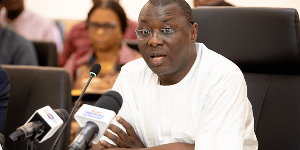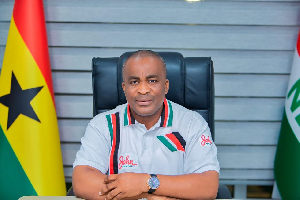Lessons from the marshall plan for a post-2015 global development agenda
Indeed it is thirst-quenching that as the deadline for the MDG’s fast approaches, development thinkers, governments, Civil Society, NGOs and the entire international community have been engaged in deliberations aimed at examining the broader implications of development cooperation – for a post-2015 development agenda in an attempt to ensure that the global development gains made over the past decade are not eroded by a potential stream of poor post-2015 national planning.
Reports on the MDGs indicate that though generally speaking, significant gains have been made ,particularly fuelled by tremendous progress in parts of Asia and Southern America, empirical evidence suggests the conditions in sub-Saharan Africa and the recent events in North Africa and the middle east leave more to desire. In fact, some studies suggest that, extreme poverty, civil wars, deprivation and diseases have so much emaciated the resource-rich land of Africa, making it even poorer today than it was 20 years ago.
As the post-2015 development thinking and debates continue, it’s important that we ruminate on what the drawbacks have been, particularly in Africa-‘the scar on the world’s conscience’. Around the late 1970s and early 1980s, the fear then was that many nations were experiencing economic growth without development- a remarkable observation by Nobel Laureate, Amartya Sen. This shifted international emphasis from the pursuit of absolute economic growth objectives to expanding human freedoms and human development. Whilst the pursuit of freedoms and ‘human development’ have shown positive correlation with economic growth, it is not sufficient to admit that, that is a sure way to ensuring sustained economic growth and ending poverty.
It is observable that nations have been deeply engrossed in this pursuit at the expense of the pursuit of economic growth especially within the private manufacturing sector which is much more critical to the economic independence of every nation and directly linked to the development prospects of the citizenry. It is worth noting that the attainment all 8 MDGs are ultimately dependent on a healthy national per capita income. As such a post-2015 development agenda should not just focus on getting nations improve their rank on the Human Development Index but also focus on helping restructure the ailing economies of Africa to empower the citizenry economically and propel nations to attain economic sufficiency and independence.
In the hunt for economic sufficiency for African nations, the Marshall Plan provides an unabridged fountain of lessons with which stakeholders in the global development agenda can quench the thirst of ideas. Originally, contained in a commencement statement by the U.S Secretary of State, George Marshall at Harvard University on 5th June 1947, He stated that it was “logical” for the United States to do whatever it could to restore the (Europe) region to economic growth, “without which there can be no political stability and no assured peace.” This, the U.S was to achieve through the European Recovery Programme, which later came to be known as the MARSHALL PLAN. The plan which ran for over four years, poured over US$13 billion in funds, technology and idea transfer into Europe, yielding returns of over 35% growth rate by 1951.
In an era where the effects of underdevelopment have overwhelmed the boundaries of nation south of the Sahara, and transcended to the shores of Europe and the U.S, a thought of rolling out a similar plan for Africa beyond 2015 would be a real move in the right direction to end poverty and deprivatiom.
My call for such a plan has been informed by the increasing concern about misuse and misapplication of donor funds by political authorities of developing nations. The way forward remains critical and from all indications there is an obvious need for international cooperation in supervising the use of funds by aid recipients. This is in harmony with a core component of the Marshall Plan. With the Marshall Plan, the U.S provided the funds through an autonomous disbursement and supervisory body, The Economic Cooperation Administration (ECA) based in Washington, with an envoy or agency in each of the European nations that signed unto the plan. Each country also had a special ECA account through which funds were paid. The receiving countries formed their own regional coordinating body, the Organisation for European Economic Co-operation (OEEC). (which is now the OECD). This strategy ensured that funds were used for their intended purposes to achieve the set priorities. I believe beyond 2015, multilaterally establishing a similar institution for African nations will go a long way to sanitise the application and use of donor funds in alleviating poverty in the region. This may as well clear the hurdles towards establishing an economic union and common market for the African continent.
Again with the Marshall Plan, the regional coordinating body, OEEC, through competitive fund allocation process ensured that monies went to nations and projects that needed them. The cooperative allocation of funds was encouraged, and panels of government, business, and labour leaders were convened to examine the economy and see where aid was needed.(Wikipedia) Instituting such a measure in Africa will ensure efficiency in allocation of funds and the use of funds for priority projects that will yield healthy economic benefits for people in the region. I am of the view that beyond 2015, donor funds should not go for government-designed development plans, with unsuccessful track records. There should be competitive allocation based on priority, efficiency and the size of returns to the local and or regional economy.
More importantly, as the way forward for private sector expansion and their involvement in the development process has become headache for many African nations, the Marshall Plan provides ample therapy for boosting private sector involvement in the development agenda. With the Marshall Plan, though funds were directly disbursed to European governments, they were in turn loaned out to local businesses, the repayment of which were used to further create more loans for other businesses whilst the returns on the loans were used to finance certain critical public projects. This circular expenditure on commercial infrastructure corroborated the job creation efforts by private sector to help flourish the European economy. There is no doubt that an adoption of this strategy will contribute immensely towards improving the economic fortunes of Africa.
Also in a bid to improve the productivity of firms in Europe, Wasser, Solidelle and Dolfman (2005) in their paper "BLS and the Marshall Plan: the forgotten story” indicated ‘American economists, statisticians, and engineers were made to educate European manufacturers in statistical measurement. The goal of the statistical and technical assistance from the Americans was to increase productive efficiency of European manufacturers in all industries….. From that (statistical analysis) the BLS could recommend technologies that each individual nation could implement (to improve productivity)… Johnson and Gordon (2002) also observed ‘the American government sent hundreds of technical advisors to Europe in order to observe workers in the field; this on-site analysis made the Factory Performance Reports especially helpful to the manufacturers. In addition, the Technical Assistance Program funded 24,000 European engineers, leaders, and industrialists to visit America and tour America's factories, mines, and manufacturing plants.’’ This again represents a different dimension in human resource development that the donor community could critically assess and implement in a post-2015 development agenda for African nations. Human resource training over the past decade has closely focused on providing tuition-free education to young Africans in the field of development studies. That is clearly not sufficient in boosting the growth prospects of Africa and as demonstrated above there needs to be a lot more technical exchange programmes for the private sector in Africa
From the preceding debates, it is evident that the Marshall Plan in its bid to ensure sustainable development, paid judicious attention to the private sector as the engine of growth and development. However, in contrast, donor support for African nations has always tended to focus on government and human development, neglecting the role of private sector and economic growth in the development agenda. Beyond 2015, there should be a broader involvement and supports for private sector, to enable it play its role in the growth and development process. Marshall in his speech said “Our policy is directed not against any country or doctrine but against hunger, poverty, desperation, and chaos. Its purpose should be the revival of a working economy in the world so as to permit the emergence of political and social conditions in which free institutions can exist. Such assistance, I am convinced, must not be on a piecemeal basis as various crises develop.” This repr5esents the missing link in the current economics of development. The Marshall Plan demonstrates that economic development can only be advanced and sustained with healthy economic growth spurred by expansion in private sector and economic activity. This will form the basis for the eradication of extreme poverty, hunger, diseases and all forms of deprivation and social exclusion beyond 2015.
THE Writer, AHMED SALIM NUHU, is a student of Economics, KNUST and the President of the College of Art and Social Sciences Students Council, KNUST 2013/2014
Email : ahmedsalimnuhu@gmail.com
Click to view details



Opinions of Tuesday, 24 December 2013
Columnist: Nuhu, Ahmed Salim


















